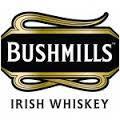Reviews of Domaine du Castel Grand Vin 2009 and Bushmills Original Irish Whiskey.
By Joshua E. London and Lou Marmon
Washington Jewish Week November 28, 2014

Matthias Gommel, speaking on behalf of “robotlab”, told reporters that the robot initially wrote down the Christian Bible in German, Spanish and Portuguese before it was reprogrammed with the help of an Israeli graphic designer to write a Torah scroll. The shortened timeframe for writing the Torah scroll is entirely due to the fact that, unlike a sofer, the robot takes no breaks and, lacking human sentience, imbues its work with no religious purpose or special concentration; the robot will otherwise be writing at about the same speed as a human hand. Indeed, part of the “bios [torah]” robotic work involves a human component: a trained sofer, named Rabbi Reuven Yaacobov, sits in a room next door, writing a Torah scroll with goose feather quill and ink on parchment to demonstrate the traditional method.
As the Rabbi explained: “In order for the Torah to be holy, it has to be written with a goose feather on parchment, the process has to be filled with meaning and I’m saying prayers while I’m writing it.” The robot’s Torah should be completed in January 2015. Most of the “Die Erschaffung der Welt” exhibition consists of Hebrew manuscripts and focuses upon the significance of sacred text in Jewish religious practice. “While the Sofer guarantees the sanctity of the Scripture, the installation highlights its industrial reproducibility,” the museum explains on its website. “It simulates a centuries-old cultural technique that has long since been overtaken by media developments.”
Thinking about this technology and art story led us, as most such news stories invariably do, to think about wine and the role of technology in winemaking. Romantic images of peasants stomping grapes have long since been replaced with high-tech, finely engineered devices, stainless steel, and computerized laboratory equipment. Winemakers have a great many amazing technological tools available to them, including such things as micro-oxygenators, spinning cone columns, reverse osmosis, and the like. But, ultimately the winemaker is dependent upon nature not technology since the wines can only be as good as the grapes no matter how much the juice can be ingeniously manipulated.
While considering this interplay between nature, science, art and technology, we focused our thoughts and ultimately relaxed our minds with a glass of the lovely, and nature-cheating-technology free, Domaine du Castel Grand Vin 2009 ($90; the more recent vintages are slightly less expensive and also excellent), an intensely aromatic, graceful beauty displaying black fruit and cedar aromas along with deep and complex plum, cassis, and raspberry flavors accented with earth, mocha and hints of mint.
Spirits-wise, we thought we’d actually take a break from our usual whisky-focus to note that Diageo, the world’s largest alcoholic drinks company, has just struck a deal to sell off its ownership of Bushmills Irish Whiskey, one of the world’s top-selling Irish whiskey brands. Why sell? Well, actually, it was more like a trade. Diageo is unloading Bushmills for tequila, and, it believes, a strong foothold in Mexico. The deal is expected to go through early next year.
See, in 2012 Diageo sought to take over Mexico-based Casa Cuervo but the deal, ahem, went south. Instead Jose Cuervo tequila left the Diageo portfolio.
Since then Diageo has been determined to rebuild its Tequila business, and has been making moves. It already owned 50 percent of Don Julio, but it wanted more. Since the 2012 deal failed, Diageo ratcheted up its marketing of Don Julio, formed a joint venture with rapper and entrepreneur Sean “P Diddy” Combs to buy the “Deleon” tequila brand. Diageo also purchased “Peligroso”, another premium brand of tequila. Yet it still wanted more of the tequila market. So now Diageo will own 100 percent of Don Julio.
In exchange, Diageo is selling Bushmills to Casa Cuervo, and Cuervo agreed to give Diageo its 50 percent stake in Don Julio, pay out $408 million, and also terminate its previously agreed rights to produce and distribute Diageo’s Smirnoff vodka in Mexico—allowing Diageo to regain control in Mexico of its strong Smirnoff brand. The end-game is straightforward: Diageo wants to boost its position in Mexico, a country with a growing pool of middle-class drinkers with increasing disposable income.
As Deidre Mahlan, Diageo’s chief financial officer, told the UK’s Daily Telegraph: “Mexico is an important emerging market” and “this transaction is a deliberate step in executing that strategy [of strengthening its position in growing markets as sales slow in other areas].” After all, she added, “the size of the tequila market globally is much bigger than Irish whiskey… this is an opportunity to grow within an important emerging market.”
As the Telegraph explained: “Tequila is the largest spirit market in Mexico and Don Julio’s premium status will tap into the country’s increasing prosperity, she said, adding that more that [sic] half the country’s population is middle class, and that Mexico’s GDP is expected to grow 4 percent for the next two years.”
Further, according to the Distilled Spirits Council of the United States, tequila is actually even more popular in the US than in Mexico, and sales have more than doubled in the last decade (hitting $2 billion in 2013).
As we contemplate all this, even though we really like Don Julio tequila, we are praying that Casa Cuervo plays it straight with Bushmills and treats her right, and do so with a dram of:
Bushmills Original Irish Whiskey (40 percent abv; $22): this is a classic, traditional Irish blended whiskey—meaning that this golden amber-colored hooch is fairly cheap, a tad rough around the edges, uncomplicated, and fairly light but deliciously easy to drink. With notes of clay, vanilla, cereal, cream, toffee, fresh biscuits and something like instant hot chocolate, grain husk and cocoa aromas finishing crisply with a little citrus, cream and pepper. Another solid, enjoyable, everyday emollient. L’Chaim!
